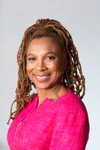So long as the structural dimensions of policing that insure disproportionate impact on Black people go unchallenged, all reforms are going to be piecemeal. That’s not to say that such reforms are not incredibly important, and that they won’t save lives as they are enacted. But new rules that change some features of law enforcement, while leaving untouched the overall project of constraining and punishing Black populations, will always fall short.
This means that the struggle is greater than just one reform on particularly egregious police tactics. We have to go much further, and probe much deeper, to talk about the role of police unions in insulating violent state actors from consequences, the role of prosecutors in targeting the most vulnerable, the role grand juries in parroting the same biases that have been reflected in the law for generations, and the role of our political system in reinforcing policing’s status quo and rewarding “tough on crime” narratives.
Case in point, it wasn’t just the existence of a no-knock warrant that took Breonna Taylor’s life. It was the War on Drugs and its targeting of the distribution level of the drug trade rather than elites in gated communities. This focus on the most marginalized predictably and repeatedly placed people of color and low-income people at the brunt of draconian policing practices, resulting in innocent people like Breonna losing their lives.
The same focus on the flaws of the downtrodden is present in the media privileging of the police story. Taken together, we have a system—and a broader social discourse—that supports an industry of life-taking. Because that industry has been the status quo in America for so long, people mistakenly think it can only be this way. That’s thinking that is being transformed by movements today.
